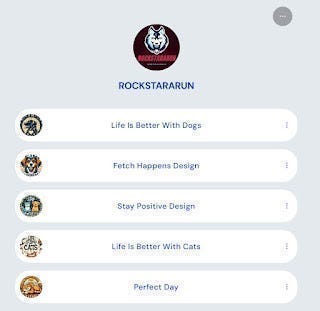iPhone 16 Review: The Future of Smartphones
The iPhone 16 is here, and once again, Apple has raised the bar in the smartphone industry. Building on its legacy of innovation, the iPhone 16 introduces cutting-edge features, design enhancements, and performance improvements that are sure to impress even the most discerning tech enthusiasts. This review delves into the key aspects of the iPhone 16, including design, display, camera, performance, battery life, and software, to help you decide if this is the smartphone for you in 2024.
Design: Sleek and Futuristic
Apple continues to refine its design language with the iPhone 16, offering a sleek, futuristic look that is both stylish and functional. The phone is available in a range of colors, including Midnight Black, Silver, Pacific Blue, and a new Sunrise Gold. The polished stainless steel frame and ceramic shield front cover ensure durability, while the matte glass back gives the phone a premium feel.
The iPhone 16 is slightly slimmer than its predecessor, with more rounded edges, making it easier to hold. The familiar flat-edge design remains, which many users love, but with subtle refinements that give it a more comfortable grip. Additionally, Apple has reduced the size of the notch at the top of the display, offering more screen real estate without sacrificing the front-facing camera or Face ID sensors.
Pros:
- Premium build quality with durable materials.
- Slimmer design with improved ergonomics.
- More color options.
Cons:
- Still no USB-C charging port (for those hoping for a switch).
- Design changes are incremental.
Display: OLED Brilliance
The iPhone 16 features a stunning 6.1-inch Super Retina XDR OLED display, which delivers deep blacks, vibrant colors, and excellent contrast. The OLED panel provides a significant upgrade over traditional LCD screens, offering improved power efficiency and brightness levels, perfect for outdoor use. Apple has also increased the peak brightness to 2,000 nits, making it one of the brightest displays on the market.
For users who love high refresh rates, the iPhone 16 continues with its ProMotion technology, delivering a buttery smooth 120Hz refresh rate that adapts dynamically based on what you're doing. This means scrolling, gaming, and even watching videos feels more fluid and responsive.
Pros:
- Vibrant OLED display with stunning color accuracy.
- ProMotion 120Hz refresh rate for smooth performance.
- High brightness for excellent outdoor visibility.
Cons:
- Some users may find the display size limiting compared to larger models.
- No major upgrades from the iPhone 15’s display.
Camera: A Step Beyond
Apple has always been at the forefront of smartphone photography, and the iPhone 16 takes that reputation further. The camera system on the iPhone 16 features a triple-lens setup, including a 48MP wide sensor, 12MP ultra-wide lens, and a 12MP telephoto lens. The larger sensor allows for more light capture, significantly improving low-light performance and overall image quality.
The new Photonic Engine improves computational photography, enhancing texture, color, and detail in every shot. Night mode is faster and delivers sharper images, while Portrait mode has been refined to offer more natural background blur (bokeh) and better subject isolation.
Apple also introduced a new "ProRAW 2.0" format, which gives photographers more control over their images, allowing them to edit photos with more precision in post-processing. The 5x optical zoom on the telephoto lens is another welcome addition, allowing you to get closer to your subjects without losing detail.
Video capabilities remain top-tier, with support for 4K Dolby Vision HDR recording and enhanced image stabilization, ensuring that your videos are smooth and cinematic, even when shooting handheld.
Pros:
- Outstanding camera system with significant improvements in low-light performance.
- ProRAW 2.0 for professional-level editing.
- Enhanced video recording with Dolby Vision HDR and better stabilization.
Cons:
- Telephoto zoom could still be better compared to competitors.
- Camera hump design remains prominent.
Performance: Powered by the A18 Bionic Chip
Under the hood, the iPhone 16 is powered by Apple's new A18 Bionic chip, which offers a substantial leap in performance and efficiency. Built on a 3nm architecture, the A18 is faster and more power-efficient than its predecessors, ensuring that the iPhone 16 can handle even the most demanding tasks, from gaming to video editing, with ease.
The A18 Bionic includes a 6-core CPU, 6-core GPU, and a 16-core Neural Engine, which powers everything from AI-driven features to augmented reality (AR) experiences. Whether you're multitasking, playing graphically intensive games, or using AR apps, the iPhone 16 provides a lag-free experience.
Thanks to the A18 chip, the iPhone 16 is also ready for 5G networks, supporting the latest wireless standards for faster downloads and more reliable connections.
Pros:
- A18 Bionic chip delivers top-tier performance.
- Efficient 3nm architecture ensures better power consumption.
- Seamless 5G connectivity.
Cons:
- Most users may not fully utilize the raw power of the A18 chip.
- Some regions still lack widespread 5G coverage.
Battery Life: More Power for the Day
Battery life has always been a key concern for iPhone users, and Apple has made significant strides with the iPhone 16. Thanks to the improved efficiency of the A18 chip and a slightly larger battery, the iPhone 16 offers better battery performance than the iPhone 15. You can expect up to 22 hours of video playback, which means the iPhone 16 will comfortably last a full day of use on a single charge.
Additionally, the iPhone 16 supports 30W fast charging, which can charge the phone from 0 to 50% in just 30 minutes. Wireless charging is still supported, with compatibility for MagSafe accessories that attach magnetically to the back of the phone.
One area of disappointment, however, is that Apple has not yet switched to USB-C charging, sticking with the Lightning port instead. For many users, this may feel like a missed opportunity, as USB-C is now the standard on many other devices.
Pros:
- Improved battery life with more efficient power consumption.
- Fast charging with 30W power adapter support.
- Wireless charging with MagSafe compatibility.
Cons:
- No USB-C port, which some users were hoping for.
- Still no charger included in the box.
Software: iOS 18 at Its Best
The iPhone 16 ships with iOS 18, the latest version of Apple's mobile operating system. iOS 18 brings a host of new features, including enhanced privacy settings, redesigned widgets, and better multitasking capabilities.
One of the standout features of iOS 18 is the new "Dynamic Island," which adapts the notch area at the top of the screen to display interactive notifications, media controls, and other quick-access features. This makes it easier to manage tasks and notifications without interrupting your workflow.
The new Continuity Camera feature lets you seamlessly switch between your iPhone and Mac for video calls, document scanning, and more. Additionally, Apple has improved the Face ID system, making it faster and more reliable, even in low-light conditions.
Pros:
- iOS 18 brings new features like Dynamic Island and enhanced widgets.
- Improved privacy features and security updates.
- Seamless integration with other Apple devices.
Cons:
- Some users may find the new features overwhelming.
- iOS 18 is still closed off to as much customization as Android.
Pricing and Storage Options
The iPhone 16 is available in several storage configurations, starting at 128GB and going up to 1TB for those who need extra space for photos, videos, and apps. The base model starts at $999, while the top-tier model with 1TB storage will set you back around $1,499. While the pricing is consistent with previous iPhone releases, it's still on the higher end of the smartphone market.
Apple’s commitment to premium materials and high-end components justifies the cost to some extent, but for budget-conscious consumers, the price tag may be a deterrent.
Pros:
- Multiple storage options to suit different needs.
- Premium build and performance.
Cons:
- Expensive compared to many competitors.
- No significant price drop from previous models.
Final Verdict: Is the iPhone 16 Worth It?
The iPhone 16 is undoubtedly one of the most advanced smartphones available in 2024. With its stunning OLED display, powerful A18 Bionic chip, and exceptional camera system, it’s a device that delivers top-tier performance across the board. The improvements in design, battery life, and software make it a worthy upgrade for anyone who values premium quality and cutting-edge technology.
That said, if you already own the iPhone 15, you might not feel the urgency to upgrade unless you’re particularly interested in the camera enhancements or the improved processing power. For those using older iPhones or switching from other brands, the iPhone 16 offers a compelling package that’s hard to beat.
FOLLOW US :
1.FREETECH YOUTUBE CHANNEL →
https://www.youtube.com/@FREETECH-xu1ob
2. ALL PRODUCTS →

https://linktr.ee/rockstararun
3. ALL COURSES →



.jpg)


No comments:
Post a Comment